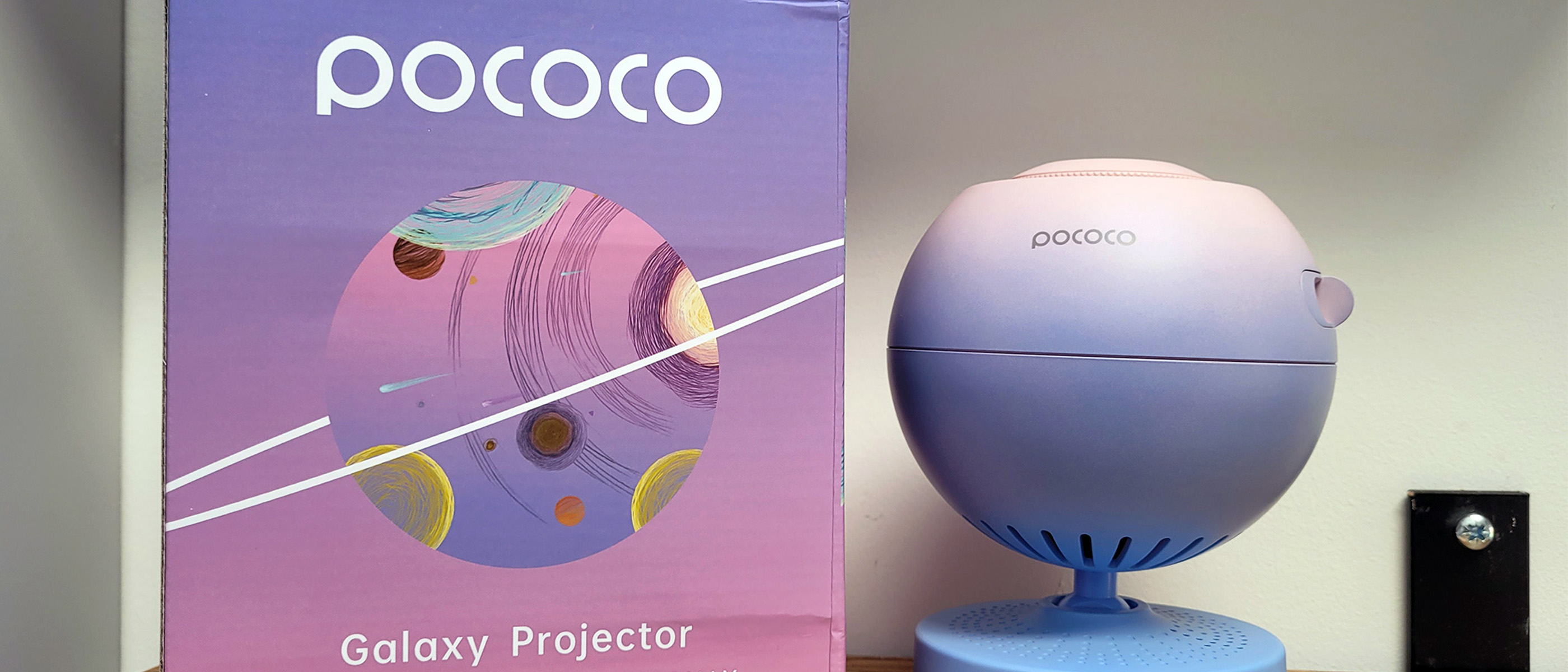Space Verdict
This is a much more reasonably priced star projector than competitors like the prestigious Sega Toys Homestar Flux. It has just the same functionality and we'd argue the imagery is just as good. The Pococo Galaxy Star projector is also rechargeable giving more positioning flexibility.
Pros
- +
Battery (rechargeable) or mains powered
- +
Realistic imagery
- +
Extension packs available
Cons
- -
Strange marketing
- -
No remote or app control
Why you can trust Space.com
The Pococo Galaxy star projector is the new kid on the block, but it certainly aims to compete with the best of them.
Before we got our hands on one, while researching the vast star projector market, we could see that the Pococo Galaxy home planetarium has an extensive expandable image disk collection, it uses LED projection and a focus ring, doesn't have laser 'stars,' has a small spherical form factor and the image quality looked sharp and vivid (in pictures available online).
Size: 157x 120x 120 mm
Bulb Type: LED
Rotation: Yes
Sleep timer: Yes
Speaker: No
Projection Surface: 12 sq m
This all sounded very similar to the Sega Homestar Flux that we reviewed, which sits at the top of our best star projectors guide. The most significant notable difference, however, is the huge price disparity. We felt we needed to put it through its paces to see whether it competes with the more widely known, more expensive home planetarium star projectors, given that it seems to have very similar functionality. Pococo claims this is an eco-friendly addition to the star projector collection, so we wanted to examine this more closely as well.
The Pococo Galaxy star projector is a simple and stylish model with lots of potential. Interchangeable discs of vivid images on a slow rotation immerse the user in a dreamy space-like ambiance. Read on for our thoughts following two weeks of testing the star projector.
Pococo Galaxy star projector review
Pococo Galaxy star projector: Design
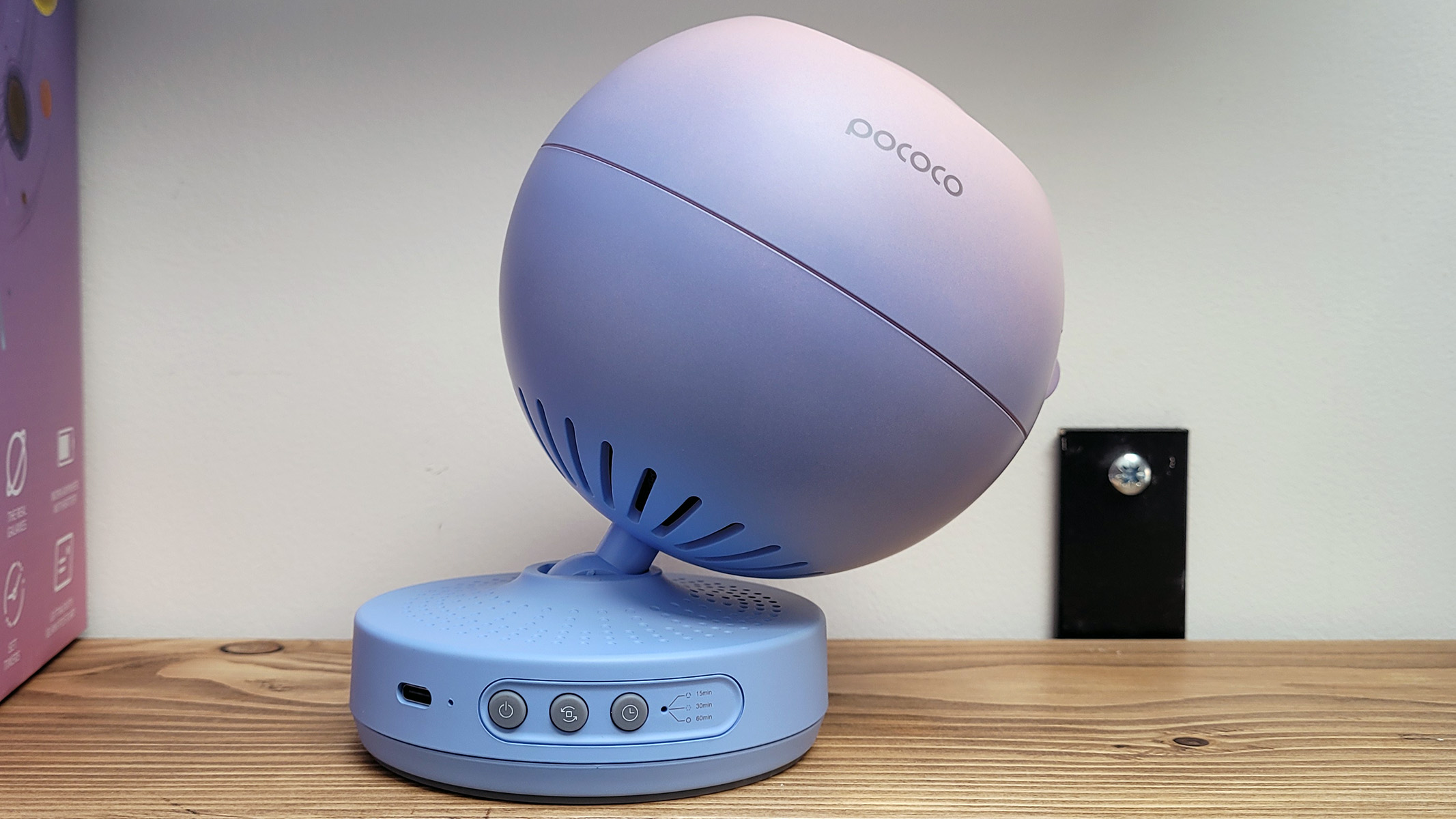
- Simple, attractive design
- Bizzare marketing language
- Not as 'eco-friendly' as claimed
The Pococo Galaxy projector is a globe-shaped home planetarium on a fixed stand that can pivot forwards and backward 60 degrees. While this doesn't sound as flexible as some other projectors we've reviewed, remember you can physically turn the whole device around 360 degrees too. The 60 degrees of flexibility in the stand means it's meant to be pointed at the ceiling or high up at the wall, where most people would want it anyway.
The projector's box is eye-catching. It is nicely designed and would be nice to receive as a gift. The pink and blue shaded box has 'shelf appeal' and would appeal to kids as a night light as well as a young/teenage audience. Pococo even includes a little postcard to use as a gift card which we think is a nice touch.
Despite the pleasant 'in-hand' appearance, we didn't like the choice of wording for some of the online marketing, for example:
Breaking space news, the latest updates on rocket launches, skywatching events and more!
'You have acne or Plus-Size Body Shape? You are called e-girl or car girl? You have to hide your authentic self after having a kid? It's time to see yourself in a new light. Just switch on your POCOCO galaxy projector.'
This example seems to focus on targeting self-conscious females, a strange thing for a home planetarium company to think is appropriate. We'd much prefer they instead focus on the functionality of the device (as it's very good) rather than trying to 'solve' people's insecurities, which don't seem relevant to us.
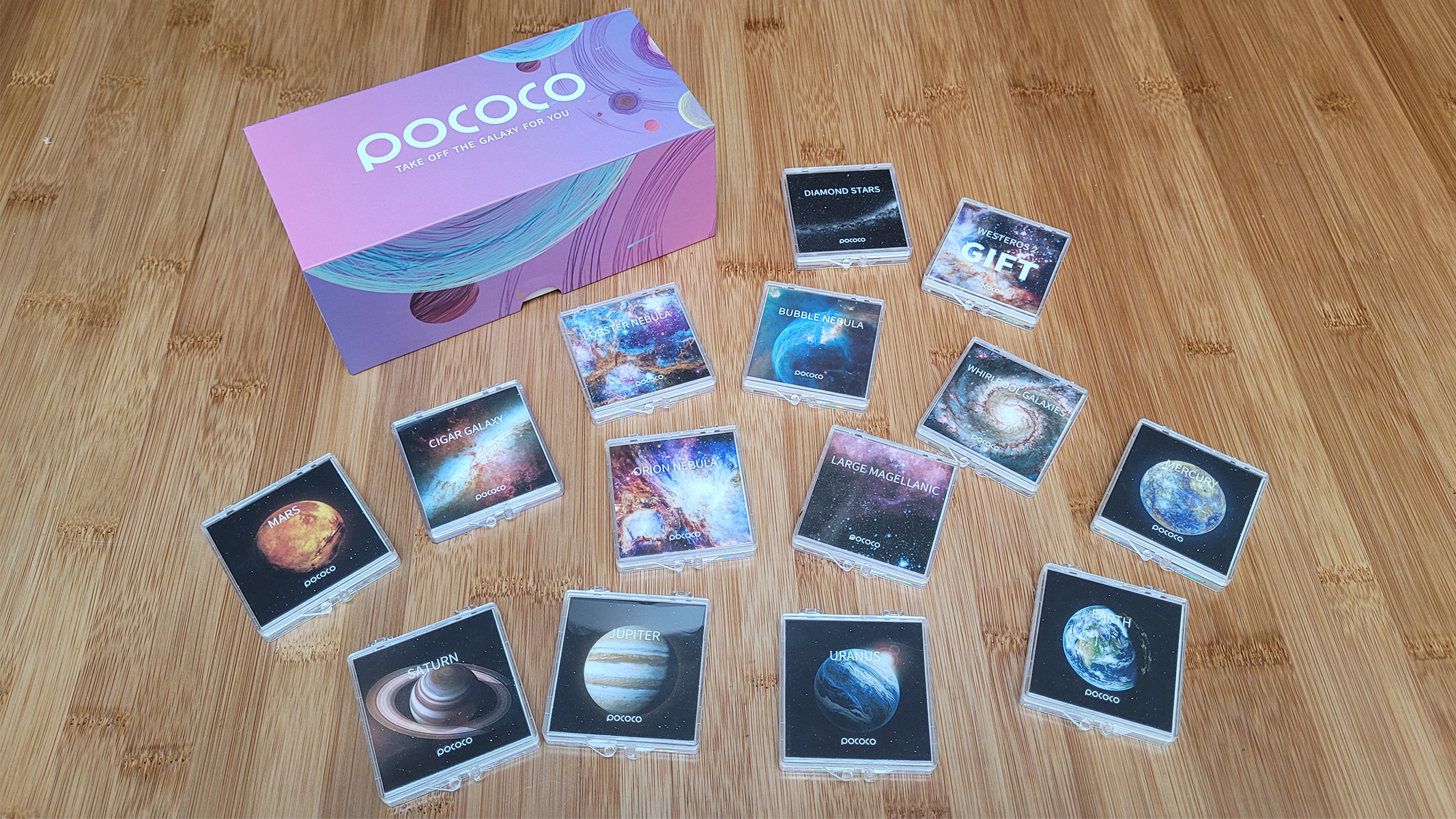
There is also a bit of 'green-washing' going on. It says all materials are recyclable, but they aren't made from recycled materials. They say the packaging is biodegradable — it's cardboard, which will eventually biodegrade but there's nothing that accelerates the process.
Furthermore, everything arrives wrapped in a non-recyclable plastic film and each individual disk is stored in an individual plastic case. In the future, we'd like to see Pococo use an alternative for these cases, like cardboard sleeves. The device should also use recycled materials and the packaging should be truly biodegradable. So while the sentiment is there, which is a good thing, Pococo needs to work on actually increasing their green credentials if they are going to use 'eco-friendly design' as a selling point.
The projector can be purchased with a pink and blue ombre paint job, or in plain white. The white model is a touch more expensive and perhaps it will appeal to a larger audience. The device only has three buttons, one to turn it on, one to start the rotation and one to set the timer. The operation couldn't be simpler.
Pococo Galaxy star projector: Performance

- High-resolution imagery
- Manual focus adjustment
- Very bright projections
The projections from this little projector are undoubtedly bright, sharp and vivid. The center wheel at the top is easy enough to turn with one finger to bring the images into focus. There is enough 'movement' in the focus wheel for projections at a range of distances. The ideal distance is 2.5m with a 12-meter squared projection area.
The image quality easily rivals those of the much more expensive Sega Homestar Flux even though the LED projector isn't as powerful.
Switching between the disks is easy, and there's only one way they will fit, so you can be sure the image is always projecting the right way around. They are a little on the small side, so it's a bit fiddly but really no problem. Interestingly, we discovered that these little disks are the same size as (so also fit) the Orzorz star projector disks.

The rotation motor is either on or off with no ability to adjust the speed like some models that you can make quicker or slower depending on your preference. It rotates fairly slowly, creating a calming effect, so we don't really see the need for having more than one speed.
The motor is nearly silent — some models we've reviewed give off a loud whirring noise — you can only hear it if you have your ear pressed against the device, so it won't keep you awake, distract you from your conversation or interrupt your film-watching experience should you have the projector on at the same time (to add ambiance to a sci-fi film, for example).
Pococo Galaxy Projector: Functionality
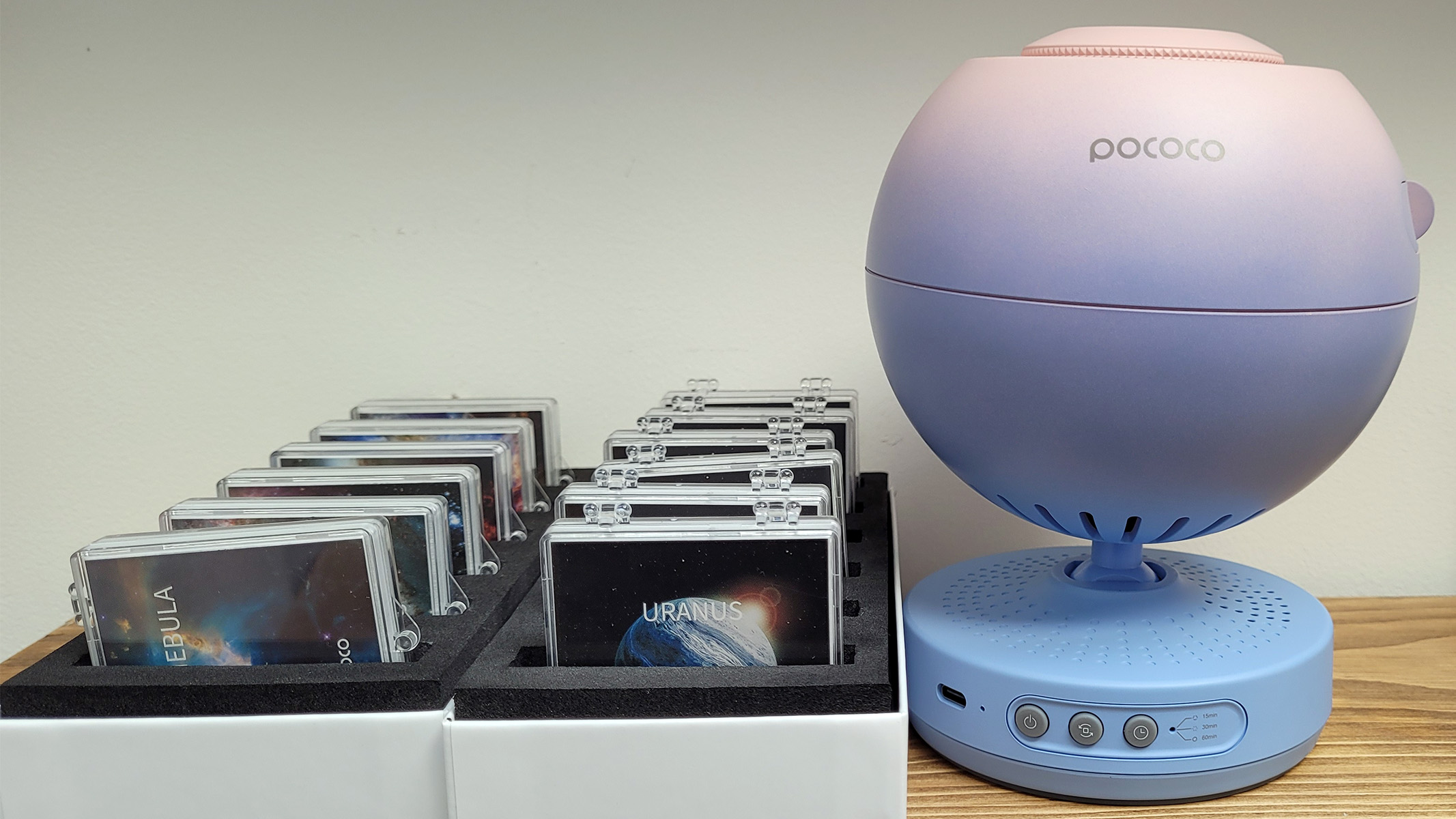
- Disks compatible with certain other projectors
- Rechargeable
- Two-hours auto switch off
There is a timer function that you can set for the projector to turn off after 15, 30 or 60 minutes. If you don't select one, the device will auto-power off after two hours. For us, this is a little short. If you wanted to project this alongside a sci-fi film for example it wouldn't last the duration. We'd prefer four hours as a minimum.
Operation is very simple, just three buttons control the timer, rotation and power, and then the focus wheel to make your images sharp — there are no convoluted apps or Wi-Fi/Bluetooth connections needed to access the full functionality.
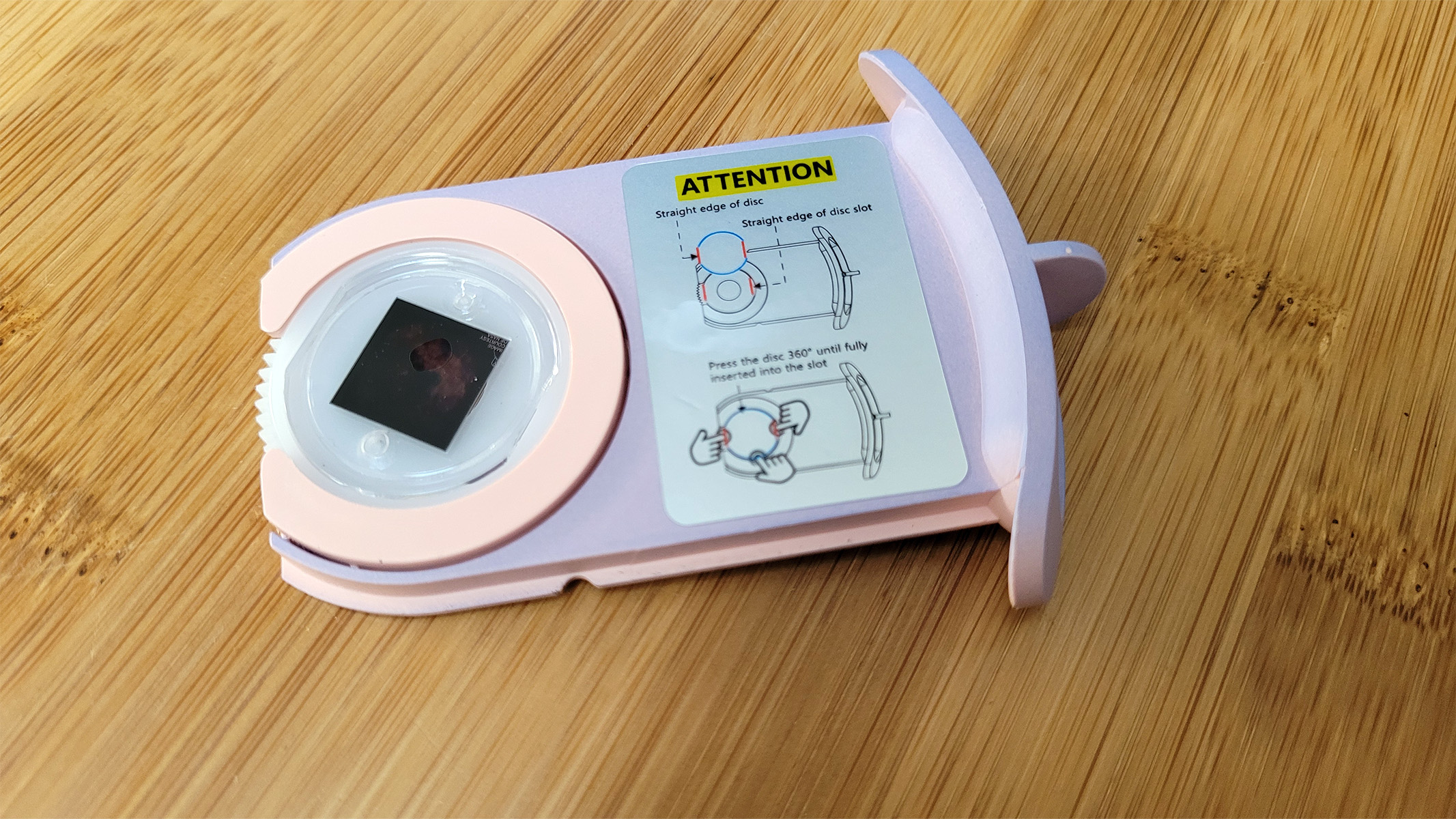
Being rechargeable, you are not limited by the length of a power cord so can put the projector on otherwise inaccessible bits of furniture or shelves. If you're projecting onto the ceiling from close proximity you do get a harsh circular edge around the projection; the further you move away, the less harsh the contrast is between the projection and darkness but the edges become a little blurry.
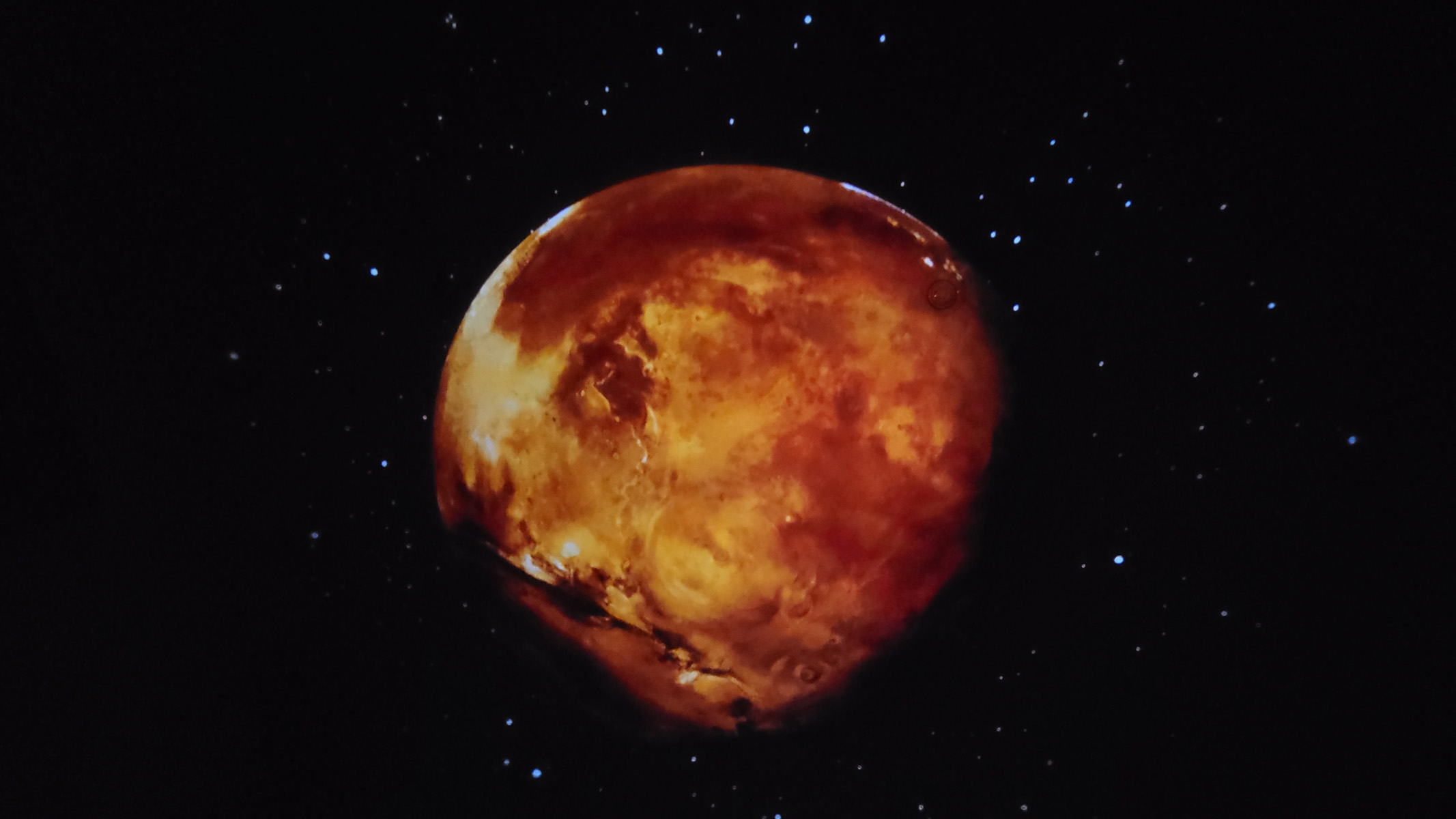
Four expansion packs of six disks are available for around $50 per box which is more than reasonable when compared to the Sega Toys Homestar Flux disks which cost $20 per disk.

We liken the experience of this Galaxy Star projector to having a space-themed poster on the wall that you can change every day and carry around to whichever wall/ceiling you choose.
Should I buy the Pococo Galaxy star projector?
We think the Pococo Galaxy projector is a great, reasonably priced buy. It does what it is supposed to — it projects high-quality imagery onto any surface to immerse you in the wonders of what the universe has to offer, maintaining a static picture or slowly rotating image.
The fact that it is rechargeable is a plus compared to the much more expensive Sega Toys Homestar Flux as it means you aren't limited to keeping it near a power source. The colored design might not be for everyone, but it's still quite discrete, and a white option is available for an additional cost.
The expansion packs are much cheaper too, and the disks also work with certain other star projectors — should you change to one of those in the future, you won't have to start your collection again.
If the Pococo Galaxy Projector isn't for you
If you're looking for alternative star projectors, we have a complete best star projectors buying guide where we've scouted out the best models and ranked them according to our preferences.
On that list, you'll find the National Geographic Astro Planetarium, also a disk-based projector, the LEDs and lasers produce bright images and 'stars.' We like the novelty of setting the date and time to see the positions of the constellations in the night sky above us at any given time. The projector is black and yellow, which may suit kids. This projector also features an integrated audio jack, speaker, in-built radio and a generous five-year warranty.
If you're looking for something that is more abstract than scientific but will help 'set the mood,' the BlissLights Sky Lite Evolve is a much cheaper alternative. You can use the RCBW (Red, Cyan, Blue and White) color wheel and seamless color blending technology to personalize the 'aurora' and transform your room. The projector emits bright nebula-inspired patterns and allows users to create unique pastel hues alongside optional LED stars. Controlled by the BlissLights app or by voice using Google/Alexa devices — you don't have to move from your seat to change the feel of your space.
Finally, if you're buying for a child specifically, you won't go wrong with the Astronaut Starry Sky projector. It's a clever novelty design, where the lights and lasers shine from the astronaut's helmet, and the controls are on its backpack or supplied remote control. We've used it in our child's nursery who still says 'wow' every time we turn it on, and thanks to the 45 or 90-minute sleep timer, we don't have to disturb them to turn it off. It's surprisingly good quality for a novelty item, but we'd put it in a different gift box as the packaging is pretty bland.

Tantse Walter is a writer, photographer and travel enthusiast that has spent over a decade facilitating global adventurous expeditions. She loves getting into the nitty-gritty of sourcing and planning itineraries, getting out and about in nature, and admiring the night sky.
